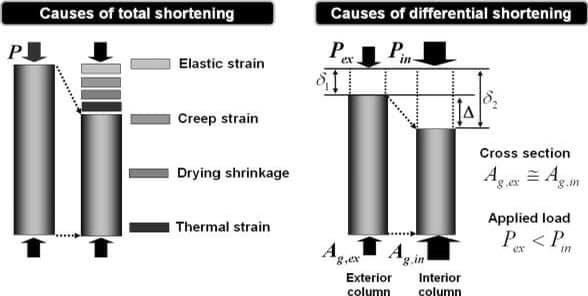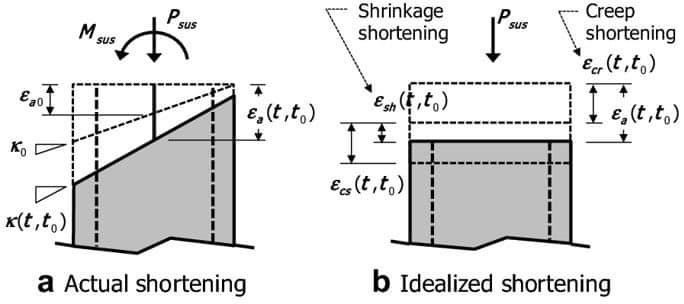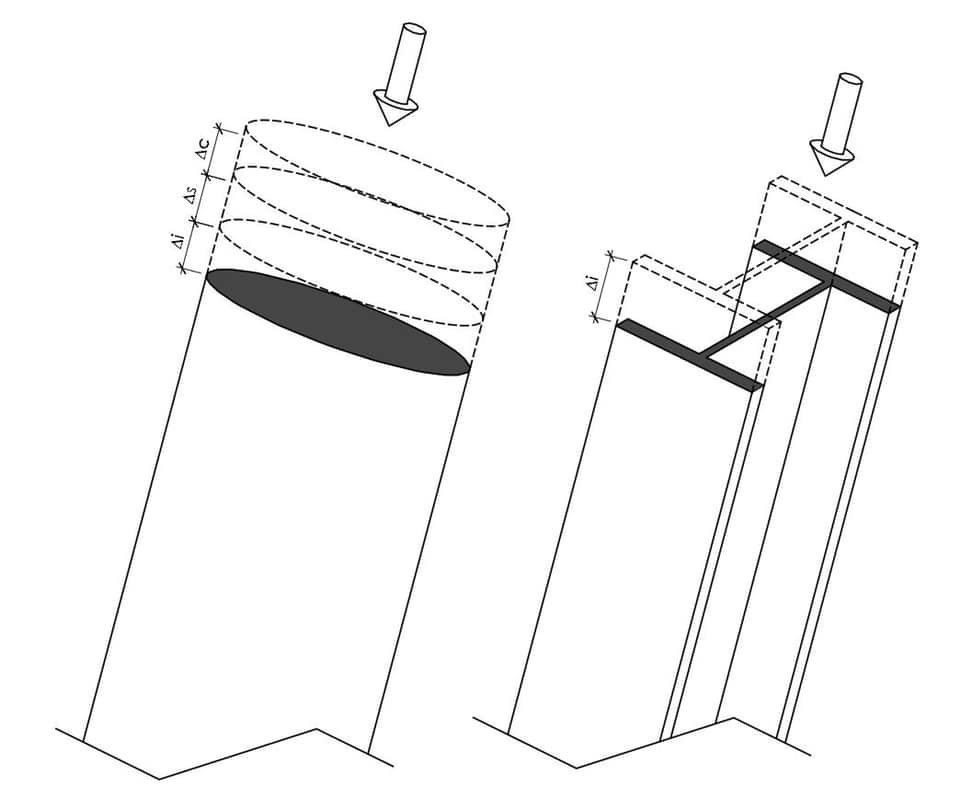Causes of axial shortening :-
In tall buildings, columns carry huge loads which effectively compress the column along its axis. This is commonly known as ‘axial shortening’. The axial column displacements generate significant forces within the structural elements they support, and can also cause failure of surrounding non-structural elements.
Concrete :-
1. Elastic deformation (∆i):
Instantaneous deformation that depends on the magnitude of load, strength of concrete and age of concrete at the time of load application.
2. Shrinkage (∆s) and creep (∆c):
Time and deformation dependent on concrete properties, amount of reinforcement, volume/surface ratio, ambient humidity conditions, magnitude of sustained load (affects creep only) and loading history. As a rough guide, 40% of the inelastic deformation takes place within the first 28 days, while after three to six months, 60% and 70% of the total deformation will occur, increasing to 90% after two years.
Steel :-
1. Whilst reinforced concrete columns are subject to elastic, creep and shrinkage shortening, steel columns are only subject to elastic shortening (∆i) due to temperature effects differs from other types of shortening as it varies continuously and can produce lengthening as well as shortening for the member.



